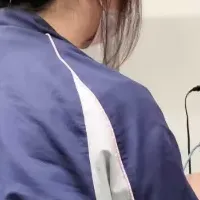
Polymer Additive Manufacturing Market Projected to Surpass $36 Billion by 2031, Fueled by Innovative Technologies
Polymer Additive Manufacturing Market Overview
The polymer additive manufacturing market is predicted to reach a staggering $36.19 billion by 2031, at a CAGR of 15.1% from 2024. This growth is primarily driven by the increasing application of 3D printing technologies across various sectors including aerospace, automotive, healthcare, and consumer goods. The demand for lightweight, durable materials is pivotal, steering innovation within polymer-based additive manufacturing.
Key Market Drivers
Several factors contribute to this burgeoning market:
1. Adoption of 3D Printing Technologies: Industries are increasingly utilizing additive manufacturing for its efficiency in producing lightweight and complex components.
2. Technological Advancements: Innovations such as high-speed printing, multi-material capabilities, and AI enhancements are accelerating growth.
3. Sustainability Initiatives: With a growing focus on eco-friendly production, interest in recyclable and bio-based polymers is surging, influencing both material selection and manufacturing processes.
Growth Opportunities
Emerging economies in the Asia-Pacific and Latin America present significant growth prospects, fueled by industrialization and investments in advanced 3D printing infrastructures. Furthermore, the integration of AI and automation is expected to streamline workflows and enhance production efficiency. The ongoing development of novel polymer composites with superior mechanical properties is expected to unlock new avenues for industrial applications, particularly in high-demand sectors like healthcare and aerospace.
Challenges Ahead
Despite its optimistic trajectory, the polymer additive manufacturing market faces challenges. Key issues include:
- - High Initial Costs: Investment barriers can deter adoption, particularly for smaller firms.
- - Material Limitations: The constraints of available materials often hinder production capabilities.
- - Regulatory Hurdles: In critical areas like medical implants and aerospace applications, stringent regulations can impact market entry.
Segment Insights
By Technology
- - Selective Laser Sintering (SLS) and Multi Jet Fusion (MJF) are gaining popularity due to their ability to produce high-quality polymer parts. While Fused Deposition Modeling (FDM) remains the go-to technology for prototyping and small production scales.
By Material
- - Thermoplastics dominate the market, particularly polylactic acid (PLA), acrylonitrile butadiene styrene (ABS), and polyether ether ketone (PEEK), noted for their versatility and cost-effectiveness.
- - The healthcare sector is seeing increased demand for high-performance polymers such as polyamide (PA) and polyurethane (PU).
By Application
- - The aerospace and automotive industries lead the way in utilizing polymer additive manufacturing for creating lightweight structural components. The healthcare sector is also noticeably expanding its use of 3D printing for medical implants and customized surgical tools.
Geographic Insights
Currently, North America is leading the polymer additive manufacturing landscape, backed by robust research and development investments, supportive government initiatives, and a concentration of key players. Conversely, the Asia-Pacific region is projected to witness the highest growth due to rapid industrialization and adoption of 3D printing technologies.
Competitive Landscape
The polymer additive manufacturing market is competitive, with key players like Stratasys, 3D Systems, EOS GmbH, HP Inc., and Materialise actively investing in research and development. Collaborative ventures between material manufacturers and 3D printer producers are enhancing polymer compatibility and print quality. Additionally, partnerships with industries such as aerospace and healthcare are driving the customized development of polymer solutions.
Future Outlook
As sustainability becomes an ever-increasing priority, companies are investing in recyclable and eco-friendly materials to align with regulatory standards and consumer expectations. The market is positioned for impressive advancement, driven by continuous technology evolution in AI and additive manufacturing processes.
In conclusion, the polymer additive manufacturing market's trajectory appears promising with robust growth potential driven by technology advancements, material innovations, and market demands across various industries. This evolution opens pathways for 3D printing to assert itself as a critical player in future manufacturing sectors.
Topics Consumer Technology)










【About Using Articles】
You can freely use the title and article content by linking to the page where the article is posted.
※ Images cannot be used.
【About Links】
Links are free to use.